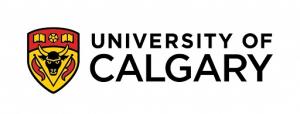


Relaxing on the couch after a hard day at work is something many of us routinely do. In 2018, Calgary -based cement truck driver Travis Umphrey was doing just that when he felt his heart suddenly race and “flop around like a fish.”
Alarmed, Umphrey, now 55, sought a physician’s help and was referred to a cardiologist. After taking part in a sleep study, he was diagnosed with sleep apnea and atrial fibrillation (AF), the most common heart arrhythmia impacting up to two per cent of Canadians.
Umphrey was advised to use a CPAP (continuous positive airway pressure) machine, a device used while sleeping to help keep the airways open, allowing patients to get the oxygen they need. The therapy brought both his sleep apnea and AF under control for several years.
But in the last couple of years Umphrey began to feel the familiar palpitations and realized his AF had returned.
“My energy was low, and I was sometimes lightheaded, but the worst part was that it was taking away my quality of life,” he says.
Umphrey once again sought help and was scheduled on May 27 to undergo a cardiac ablation, a common treatment for AF that involves strategically scarring the heart tissue via a catheter inserted into a vein, usually at the groin.
What was not so common was that Umphrey learned he would be the first patient in Western Canada to be treated using a new ablation technology: pulsed field ablation (PFA).
Historically, AF ablation in Calgary involved heating the tissue around the pulmonary veins with radiofrequency energy to interrupt the electrical pathways that trigger the condition. PFA replaces this technology, using high-amplitude pulsed electrical fields delivered via a catheter, rather than heat, to damage the tissue.
Dr. Russell Quinn, MD, a cardiologist and clinical associate professor in the Department of Cardiac Sciences at the Cumming School of Medicine, led the team during Umphrey’s ablation.
He says PFA has been used for tens of thousands of patients in Europe and is now approved in Canada and the U.S.
“This new technology is a lot more efficient,” he says. “Ultimately, it may allow us to complete an AF ablation in around an hour, rather than the three hours it takes when using the current radiofrequency ablation technology.”
Umphrey was able to return home the same day as his procedure and is doing well.
“My recovery was good, and my atrial fibrillation has been in check since,” he says.
When Umphrey was told he would be the first in Western Canada to benefit from PFA, he was surprised, but unconcerned.
“I laughed when Dr. Quinn told me,” he says. “I was never worried, I felt that I was in really great hands.”
According to Quinn, PFA has several benefits. Besides being more efficient, it can be performed under conscious sedation, meaning the patient is awake, rather than general anaesthetic, and may result in a less painful recovery. Another positive is that it requires many of the same techniques and skills as the traditional method, so physicians will likely be able to adopt the technology quite quickly.
Calgary’s AF ablation team includes six physicians, who perform up to three ablations in a day, treating about 300 people annually. With the new technology, each may be able to increase their cases to four or five per day. PFA is only available to first-time ablation patients; however, returning patients can be re-ablated using the older technology.
“Atrial fibrillation is relatively common, so there is a large volume of patients we could be offering ablation to,” says Quinn. “This new technology has the potential to get them treated earlier and improve their quality of life.”